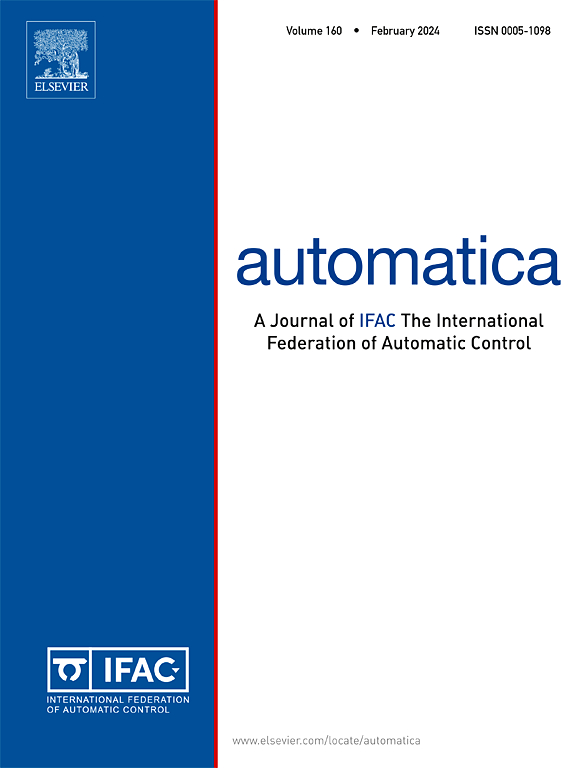A joint diagnoser approach for diagnosability of discrete event systems under attack
IF 4.8
2区 计算机科学
Q1 AUTOMATION & CONTROL SYSTEMS
引用次数: 0
Abstract
This paper investigates the problem of diagnosing the occurrence of a fault event in a discrete event system (DES) subject to malicious attacks. We consider a DES monitored by an operator through the perceived sensor observations. It is assumed that an attacker can tamper with the sensor observations, and the system operator is not aware of the attacker’s presence at the beginning. We propose a stealthy joint diagnoser (SJD) that (i) describes all possible stealthy attacks (i.e., undiscovered by the operator) in a given attack scenario; (ii) records the joint diagnosis state, i.e., the diagnosis state of the attacker consistent with the original observation and the diagnosis state of the operator consistent with the corrupted observation. The SJD is used for diagnosability verification under attack. From the attacker’s point of view, we present two levels of stealthy attackers: one only temporarily degrades the diagnosis state of the operator, and the other permanently causes damage to the diagnosis state of the operator, thereby resulting in a violation of diagnosability. Finally, necessary and sufficient conditions for the existence of the two levels of attackers are presented.
受攻击离散事件系统可诊断性的联合诊断方法
本文研究的问题是如何诊断受到恶意攻击的离散事件系统(DES)中发生的故障事件。我们考虑由操作员通过感知传感器观测数据监控的 DES。假设攻击者可以篡改传感器观测数据,而系统操作员一开始并不知道攻击者的存在。我们提出了一种隐身联合诊断器(SJD),它(i)描述了给定攻击场景中所有可能的隐身攻击(即操作员未发现的攻击);(ii)记录联合诊断状态,即攻击者的诊断状态与原始观测值一致,操作员的诊断状态与被破坏的观测值一致。SJD 用于攻击下的可诊断性验证。从攻击者的角度来看,我们提出了两个层次的隐蔽攻击者:一种只是暂时降低操作者的诊断状态,另一种则会永久性地破坏操作者的诊断状态,从而导致违反可诊断性。最后,我们提出了这两级攻击者存在的必要条件和充分条件。
本文章由计算机程序翻译,如有差异,请以英文原文为准。
求助全文
约1分钟内获得全文
求助全文
来源期刊

Automatica
工程技术-工程:电子与电气
CiteScore
10.70
自引率
7.80%
发文量
617
审稿时长
5 months
期刊介绍:
Automatica is a leading archival publication in the field of systems and control. The field encompasses today a broad set of areas and topics, and is thriving not only within itself but also in terms of its impact on other fields, such as communications, computers, biology, energy and economics. Since its inception in 1963, Automatica has kept abreast with the evolution of the field over the years, and has emerged as a leading publication driving the trends in the field.
After being founded in 1963, Automatica became a journal of the International Federation of Automatic Control (IFAC) in 1969. It features a characteristic blend of theoretical and applied papers of archival, lasting value, reporting cutting edge research results by authors across the globe. It features articles in distinct categories, including regular, brief and survey papers, technical communiqués, correspondence items, as well as reviews on published books of interest to the readership. It occasionally publishes special issues on emerging new topics or established mature topics of interest to a broad audience.
Automatica solicits original high-quality contributions in all the categories listed above, and in all areas of systems and control interpreted in a broad sense and evolving constantly. They may be submitted directly to a subject editor or to the Editor-in-Chief if not sure about the subject area. Editorial procedures in place assure careful, fair, and prompt handling of all submitted articles. Accepted papers appear in the journal in the shortest time feasible given production time constraints.
 求助内容:
求助内容: 应助结果提醒方式:
应助结果提醒方式:


